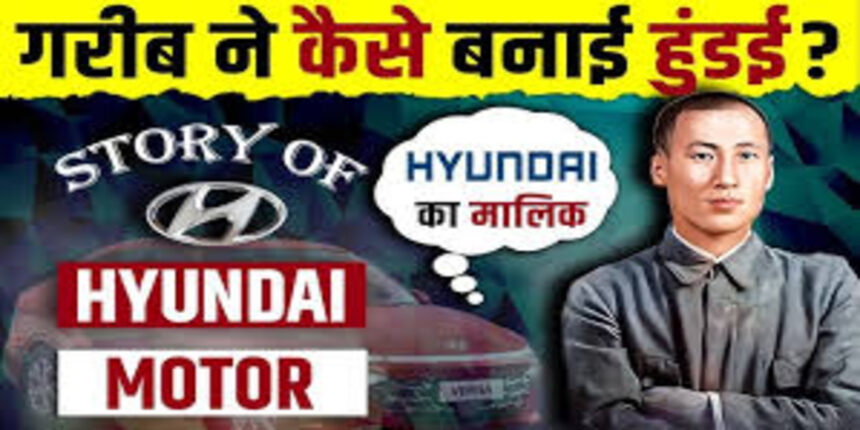In 1915, a boy named Chung Ju-yung entered the world in a tiny village in what is now North Korea. His family scraped by on a small farm under Japanese rule. They faced harsh days with little food or hope. Yet this poor kid dreamed big. He would one day build Hyundai, a giant company that shapes cars and ships worldwide. Who could guess such a start would lead to billions?
The story of Hyundai shows what grit and smart ideas can do. Chung turned a simple construction outfit into a powerhouse that touches lives everywhere. From fixing roads in a broken land to making vehicles for the globe, his path teaches us all. Resilience pushed him forward, even when odds stacked high.
This piece walks you through Chung’s life, from farm boy to business king. You’ll see his early fights, big wins, and smart choices. Key lessons pop up along the way—things like starting small and bouncing back from tough spots. Hyundai now pulls in over $150 billion a year. That’s the power of one man’s drive. Stick around to grab tips for your own goals.
Early Life and Humble Beginnings
Chung Ju-yung grew up in tough times after World War II. Korea lay in ruins, split by war and foreign control. His family owned just a few acres of rocky land. They worked sunup to sundown for basic meals. This world shaped Chung into a fighter from day one.
Childhood in Poverty and First Hustles
As a kid, Chung hated the endless farm chores. At age 16, he ran off to Seoul for better chances. He landed odd jobs, like stocking shelves in a rice shop. Later, he drove a beat-up truck, hauling goods through busy streets. These gigs taught him the value of hard work. No silver spoon here—just sweat and smarts.
He saved every penny from those early hustles. Chung fixed broken tools on the side to earn extra. Friends saw his fire; he never quit. This spirit would fuel bigger dreams soon. You can start like this too—grab any chance that comes.
World War II and the Spark of Ambition
Japanese forces ruled Korea hard during the war. Food shortages hit everyone. Chung tried trading goods on the black market to feed his family. Cops caught him once and threw him in jail. That short stay lit a fire in him. He vowed to rise above the mess.
Out of jail, he thought deeper about freedom and success. War ended, but scars remained. Chung learned rules could bend with bold moves. This mindset pushed him to chase real business. History’s chaos often sparks great leaders.
Forming the Foundation: Entering Business
In 1946, Chung jumped into trade with a small rice-selling setup. He had no bank loans—just his wits. Soon, he fixed cars in a tiny garage. Customers trusted his quick hands and fair prices. This mix of trade and repair built his first real cash flow.
Korea’s economy was a wreck, but Chung saw openings. He borrowed tools and worked nights. Start small in hard times, he showed us. Use what you have; grow from there. His early wins proved it works.
Founding Hyundai and Navigating Post-War Challenges
After the war, Korea needed rebuilding fast. Chung spotted the need for strong builders. He dreamed of a firm that could fix the land. No big money or connections held him back. His vision cut through the fog of doubt.
Launching Hyundai Engineering & Construction in 1947
Chung started Hyundai in a single room with 50 workers and old trucks. They took on small jobs like road fixes. One early hit was the Namsan Cable Car in Seoul. It drew crowds and cash. This project put Hyundai on the map.
Workers toiled long hours under Chung’s lead. He joined them, sleeves rolled up. From that base, they chased bigger contracts. Humble starts build solid ground. Hyundai’s name means “modernity”—a perfect fit.
Surviving the Korean War and Economic Turbulence
War broke out again in 1950, tearing Korea apart. Hyundai shifted to repair work for U.S. forces. They fixed bridges and roads bombed to bits. This kept money coming in when others folded. Chung’s quick pivot saved the day.
Turbulence followed the 1953 armistice. Supplies ran short; politics got messy. Yet Hyundai grabbed government deals for dams and ports. Adapt your plan in crises, Chung taught. Stay flexible to survive storms.
- Key survival tactics:
- Partner with those who have resources, like the army.
- Focus on urgent needs, such as quick repairs.
- Train your team to handle shifts fast.
Expansion into Heavy Industry
By the late 1950s, Chung eyed bigger fields. He moved into steel and ships, risky bets in a poor nation. Ties with Japanese firms brought tech know-how. Hyundai built its first steel mill, feeding growth.
Workers learned on the job, pushing limits. Chung’s risks paid off as orders poured in. In developing spots, bold steps open doors. He proved it step by step.
Key Milestones and Global Expansion
Hyundai’s story ramped up in the 1960s. Chung chased new horizons beyond building. Innovation drove each leap. Timelines mark the climbs—each one a win against odds.
Entering the Automobile Industry in the 1960s
In 1967, Hyundai Motor kicked off. They assembled the Cortina car under a Ford deal. South Korea’s plans backed this push for local industry. Factories hummed with new energy.
Chung hired top talent to learn fast. Government aid fueled the fire. Cars soon rolled out for Korean roads. This entry changed everything. Why not try new paths? Chung did.
Building the Ulsan Plant and Export Breakthroughs
The Ulsan plant opened in 1968—a huge site by the sea. It churned out parts and full cars. In 1975, the Pony sedan shipped to Canada. That marked Hyundai’s global toe-dip.
Exports grew quick after that. Buyers liked the cheap, tough rides. Ulsan stood as a bold symbol. Big builds show ambition. Hyundai’s reach spread wide.
- Export wins:
- Pony to Canada in 1975.
- U.S. market entry in 1986.
- Millions sold by the 1990s.
Diversification into Shipbuilding and Beyond
The 1970s saw Hyundai Heavy Industries soar. They built massive ships, topping world charts. Oil booms brought orders galore. Chung spread risks across fields like this.
Diversify to dodge hits in one area. Hyundai added electronics and more. This web strengthened the whole group. Smart spreads build lasting power.
Innovations, Challenges, and Chung’s Leadership Philosophy
Chung led with a clear eye and firm hand. He pushed quality without waste. Setbacks came, but he turned them to strength. His ways kept Hyundai moving.
Pioneering Quality and Cost Efficiency
In the 1980s, Hyundai built its own research teams. The Excel model hit markets with fresh designs. Chung preached hard work, speed, and thrift. From his life story, these rules stuck.
Cars got better, prices stayed low. Buyers noticed the change. Cut costs smartly to compete. Chung’s mantra worked wonders.
Overcoming Crises: The 1997 Asian Financial Meltdown
Asia’s money crash in 1997 rocked Hyundai. Debts piled high; near collapse loomed. Chung restructured, merging with Kia for stability. They cut fat and refocused.
Recovery took guts and team trust. Hyundai bounced back stronger. Face crises head-on. Adapt or fade away.
Legacy of Bold Bets and Employee Empowerment
In 1998, Chung sent workers to North Korea for a peace project. It built a resort, easing tensions. This showed his vision beyond profit.
Empower your people in tough times. Chung’s bets paid in loyalty and wins. Lead with heart and plan.
Chung Ju-yung’s Personal Journey to Billionaire Status
From farm dirt to boardrooms, Chung’s path inspires. His wealth grew from zero to billions. Family ties wove into the tale. The poor boy became a tycoon through sheer will.
Building Wealth Through Calculated Risks
Hyundai’s assets topped $100 billion by the 1990s. Chung’s risks, like shipyards, stacked the gains. He gave back through charities too. Ethical paths build true riches.
Net worth hit over $10 billion at his peak. Each step calculated, yet daring. Wealth follows smart gambles.
Family Involvement and Succession
Sons ran key parts of the business. They handled motors and ships with skill. After Chung’s 2001 death, the group split into parts. Tensions rose, but the core held.
Family dynasties face tests. Hyundai adapted post-split. Succession needs clear plans.
Lessons from a Self-Made Tycoon
Chung taught persistence above all. Failures? Learn and push on. Keep learning from slips.
- Top tips:
- Stick to goals despite knocks.
- Build teams that trust you.
- Stay frugal even in wins.
Conclusion
Chung Ju-yung’s tale—from poor farm boy to Hyundai billionaire—captures pure drive. He started with nothing in war-torn Korea. Through hustles, bold starts, and global leaps, he crafted an empire. The story of Hyundai reminds us success comes from grit.
Three key insights stand out for you. First, take calculated risks to grow. Second, adapt quick in hard times. Third, build with thrift and team power. These steps turned Chung’s dreams real.
Hyundai keeps innovating today, from electric cars to smart ships. You can use these lessons in your life. Start small, dream big, and watch your path unfold. What’s your next move?

